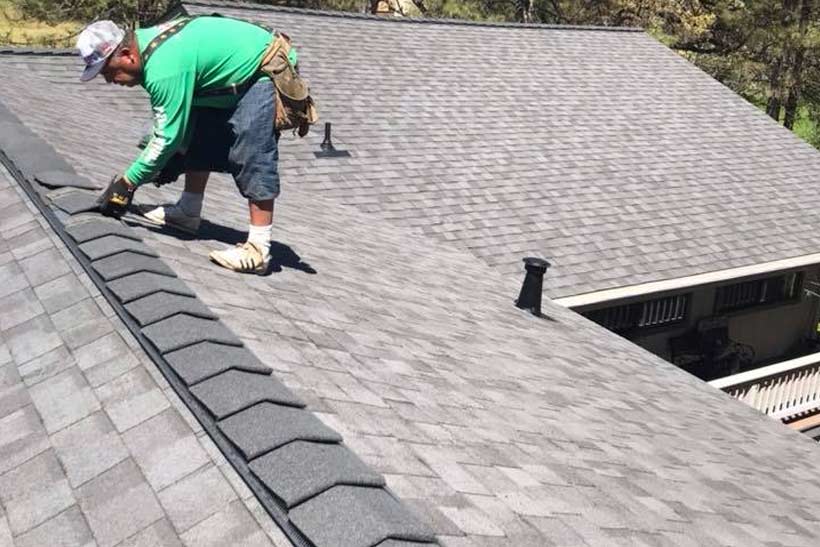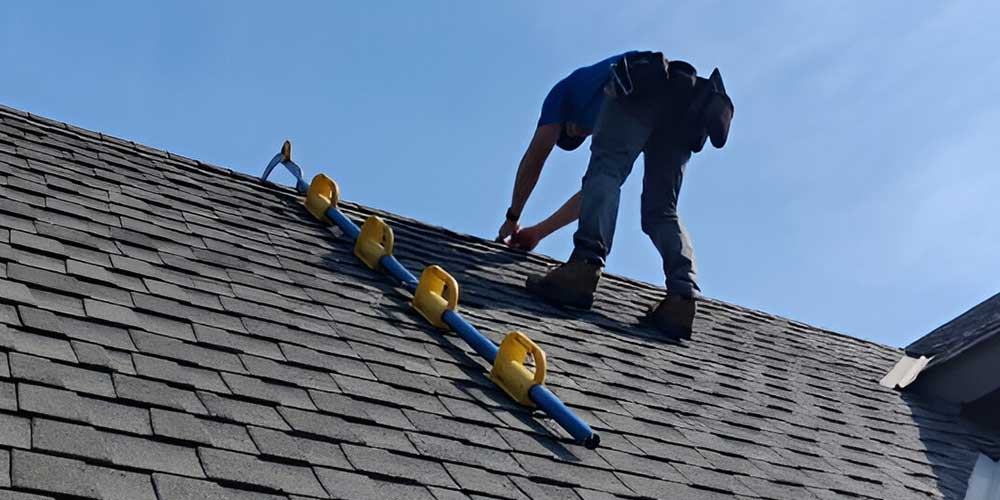Exploring the Different Kinds Of Roof Coverings: Which One Is Finest for Your Home?
When thinking about the myriad sorts of roofings readily available, it is essential to examine just how each alternative aligns with your home's one-of-a-kind needs, including climate conditions, aesthetic preferences, and architectural performance. From the traditional saddleback roof that effectively channels rain to the modern-day flat roofing system offering city adaptability, each style provides distinctive advantages and challenges. Moreover, the choice might significantly impact long-lasting upkeep and power effectiveness. As you contemplate the finest fit for your home, it is important to weigh these factors meticulously, specifically as some alternatives may amaze you with their prospective advantages.
Gable Roofing Systems
Saddleback roofs, defined by their triangular form and sloping sides, are a prominent selection amongst property owners seeking both aesthetic charm and capability. This roof design efficiently enables efficient water overflow, lowering the danger of water merging and succeeding damages. Furthermore, the steep slopes develop adequate attic room room, which can be utilized for storage space and even transformed into living areas.
One of the main benefits of gable roofs is their ability to stand up to rough weather. The style aids in decreasing wind resistance, making them particularly ideal for locations vulnerable to tornados. In addition, gable roof coverings can be created utilizing a range of products, including roof shingles, ceramic tiles, and metal, providing property owners with adaptability in layout and budget plan.
From a building point of view, gable roofings can enhance the aesthetic appeal of a home, providing a classic and traditional look. They can complement various building designs, from conventional to modern layouts. However, it is important to take into consideration prospective downsides, such as the susceptibility to snow accumulation in chillier environments. In general, gable roof coverings remain a favored alternative due to their balance of functionality and design, interesting a wide variety of property owners.
Flat Roofs
While usually overlooked for even more conventional roofing styles, flat roofing systems offer distinct benefits that accommodate specific building requirements and contemporary style choices. These roofings are defined by their very little pitch, permitting effective usage of space, specifically in city settings where taking full advantage of square video is vital.
One considerable advantage of level roofing systems is their adaptability. They can be made use of as extra space, such as rooftop yards, outdoor patios, or photovoltaic panel installments, boosting the performance of a home. Furthermore, level roofing systems are generally easier and more secure to navigate during upkeep, promoting fixings and assessments without the challenges positioned by steep inclines.
Flat roof coverings can also be much more affordable in regards to materials and installment. With a less complex style, they typically call for fewer resources, equating into reduced labor expenses. Nevertheless, it's critical to think about water drainage and waterproofing, as flat roof coverings can be susceptible to merging water otherwise sufficiently designed.

Hip Roofing Systems
Hip roof coverings attract attention for their classy design and architectural stability, making them a preferred option among house owners. Identified by slopes on all four sides, hip roofings supply a well-balanced aesthetic that enhances different architectural designs - roof repair oahu. The in proportion nature of these roof coverings aids to distribute weight evenly, improving security and toughness
One of the vital benefits of hip roofs is their capacity to endure extreme climate problems. The sloped view it now surface areas promote effective water drainage and snow drainage, reducing the risk of leaks and architectural damages. Additionally, the design minimizes wind resistance, making hip roofs much less at risk to wind uplift compared to other roofing kinds.


Shed Roofs
Lost roofs, unlike the complexity of hip roofs, supply a structured and minimal layout that interest modern aesthetics. Characterized by a single sloping surface, shed roofings are frequently utilized in modern design, yard sheds, and other useful structures. This simplicity not just improves aesthetic allure but additionally enables reliable water drainage, making them appropriate for various climates.
One of the primary advantages of shed roofing systems is their cost-effectiveness. With less products called for and a straightforward installation procedure, home owners can conserve both money and time. The style likewise allows the consolidation of huge windows or skylights, promoting all-natural light and creating roomy interiors.
However, it is necessary to take into consideration the potential drawbacks, including limited insulation options and the need for careful style to prevent too much warmth accumulation. In addition, lost roofings may not blend flawlessly with standard style, which could be an issue for some homeowners.
Eventually, lost roofs offer a practical and stylish roof covering service for those seeking modernity and efficiency. When picking a roof covering kind, examining personal functional needs and aesthetic choices will guide home owners to the ideal option for their distinct demands.
Mansard Roof Coverings
Mansard roofing systems, characterized by their distinct four-sided layout, go to my site are a characteristic of French design that combines style with performance. This building style includes two inclines on each side, with the lower slope being steeper than the top one. The special arrangement permits extra living space in the top levels, making it a perfect choice for home owners seeking to maximize functional area without broadening the building's footprint.
Among the discover this considerable benefits of a mansard roofing system is its versatility. It can be adapted to various architectural styles, from typical to contemporary, boosting the aesthetic charm of any home. In addition, the ample area produced under the roofing system can easily accommodate dormer home windows, which enable natural light and air flow, further boosting the convenience of the living location.
However, prospective home owners should take into consideration the upkeep demands linked with mansard roofs. The steep inclines can bring about increased wear from weather condition exposure, demanding normal evaluations and fixings. Furthermore, setup costs may be greater contrasted to simpler roofing designs as a result of the intricacy of building and construction. Inevitably, a mansard roofing can be a superb choice for those prioritizing design and room.
Verdict
Each roof covering style offers distinct benefits, such as the efficiency of gable roof coverings, the contemporary charm of shed roofings, and the security of hip roof coverings. Level roofs use practicality for urban environments, while mansard roofings give extra living room despite higher installment costs.
From the timeless gable roofing that efficiently networks rainwater to the contemporary level roofing system offering urban flexibility, each style provides distinctive benefits and obstacles (roof repair oahu). Additionally, the style lessens wind resistance, making hip roofing systems much less at risk to wind uplift contrasted to various other roof types
Dropped roofs, in comparison to the intricacy of hip roofs, provide a structured and minimal design that appeals to contemporary appearances. Each roof covering design offers unique advantages, such as the efficiency of gable roof coverings, the contemporary charm of shed roofings, and the security of hip roofings. Level roof coverings supply functionality for urban environments, while mansard roofs supply added living room regardless of greater installation expenses.
 Haley Joel Osment Then & Now!
Haley Joel Osment Then & Now! Alana "Honey Boo Boo" Thompson Then & Now!
Alana "Honey Boo Boo" Thompson Then & Now! Patrick Renna Then & Now!
Patrick Renna Then & Now! Tiffany Trump Then & Now!
Tiffany Trump Then & Now! Macaulay Culkin Then & Now!
Macaulay Culkin Then & Now!